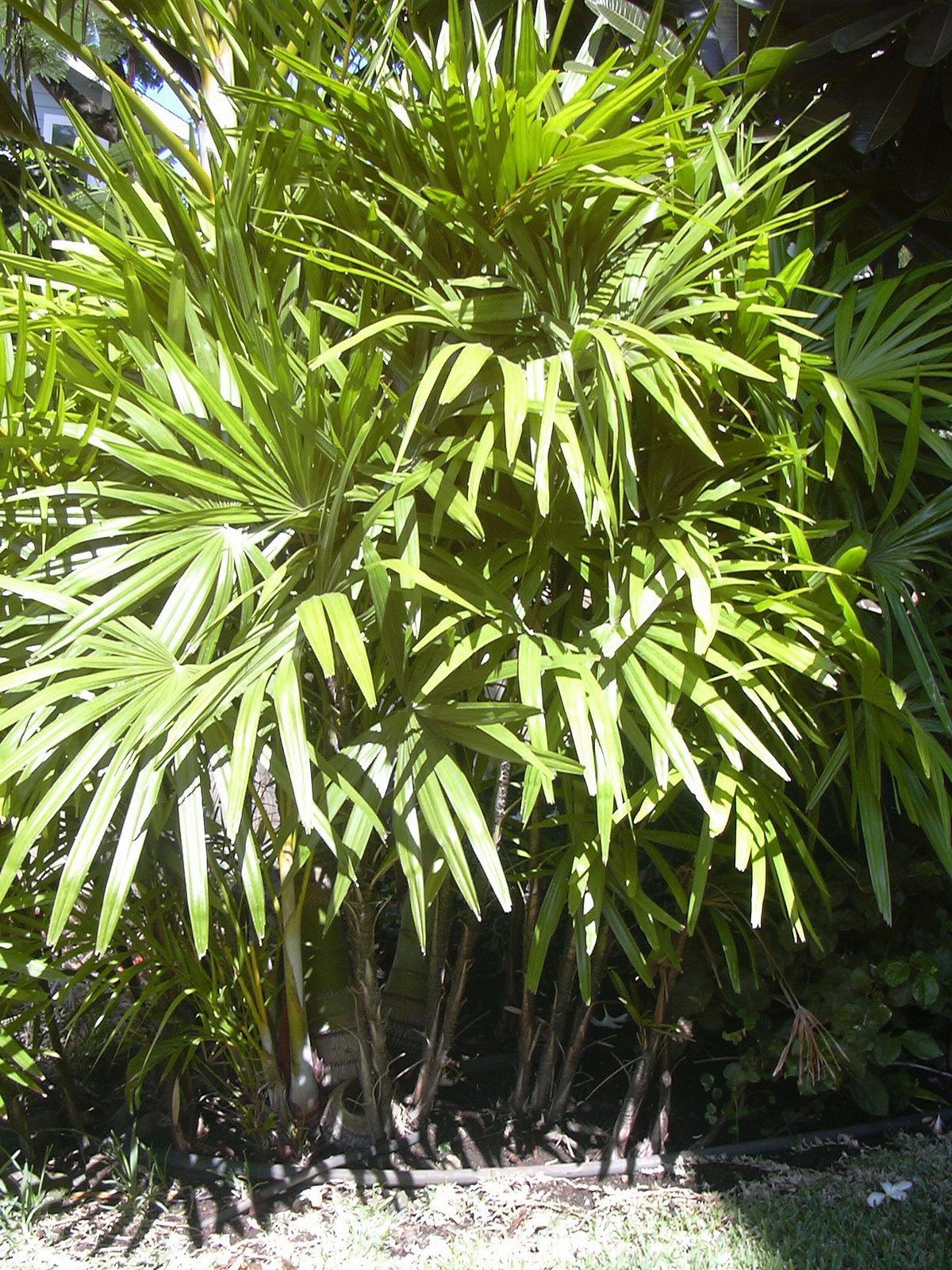Lady Palm Care: Tips For Growing Lady Palms Indoors


With broad, dark green, fan-shaped foliage on tall stalks, lady palm plants (Rhapis excelsa) have an oriental appeal. As stand-alone plants, they have a formal elegance and when planted in masses they lend a touch of the tropics to the landscape. Outdoors they can reach heights of 6 to 12 feet (2 to 3.5 m.) with a spread of 3 to 12 feet (91 cm. to 3.5 m.). When grown in the confines of a container, they stay much smaller.
Lady Palm Care Indoors
Place your lady palm plant near an east-facing window, out of direct sunlight. They thrive in comfortable indoor temperatures of between 60 and 80 F. (16-27 C.).
Water the palm when the soil is dry to a depth of 1 inch (2.5 cm.) in spring and summer. In fall and winter, allow the soil to dry to a depth of two inches (5 cm.). Drench the soil with water until it comes out the drainage holes in the bottom of the pot and empty the saucer under the pot after 20 to 30 minutes. When the plant becomes so large and heavy that it is hard to empty the saucer, set it on top of a layer of pebbles to prevent the soil from reabsorbing the moisture.
Repot a lady palm plant every two years, increasing the size of the pot each time until it is as large as you want it to grow. After it has reached the desired size, repot every two years or so into the same pot or a pot of the same size to refresh the potting soil. African violet potting mix is ideal for growing lady palms.
Take care not to over-fertilize a lady palm plant. Feed them only in summer using half-strength liquid houseplant fertilizer. With proper care, the plant should last for several years.
How to Care for a Lady Palm Outdoors
Outdoors, large plantings of lady finger palms may remind you of bamboo, but without the invasive tendencies. Plant them as you would hedges on 3- to 4-foot (91 cm. to 1 m.) centers to form a screen or backdrop. They also make nice specimen plants. Outdoor plants produce fragrant, yellow flowers in spring.
Lady palms are hardy in USDA hardiness zones 8b through 12. They need full or partial shade.
Gardening tips, videos, info and more delivered right to your inbox!
Sign up for the Gardening Know How newsletter today and receive a free copy of our e-book "How to Grow Delicious Tomatoes".
Although they adapt well to a variety of soil types, they perform best in a rich, well-drained soil with plenty of organic matter.
Water often enough to keep the soil lightly moist where practical. The plants tolerate moderate drought.
Use a palm fertilizer, according to the label instructions, no more than once a year.

Jackie Carroll has written over 500 articles for Gardening Know How on a wide range of topics.
-
 Looking For Plants To Give You The Soft And Fuzzies? Try These 5 Fuzzy Leaf Plant Options
Looking For Plants To Give You The Soft And Fuzzies? Try These 5 Fuzzy Leaf Plant OptionsLovers of texture, drama, silver foliage and tactile plants will adore these special sensory garden additions. These fuzzy leaf plant options will leave you all aglow
By Susan Albert
-
 Get Ready For A Summer Of Hummers! Grow These Full Sun Hummingbird Plants and Flowers
Get Ready For A Summer Of Hummers! Grow These Full Sun Hummingbird Plants and FlowersIf you’re lucky enough to enjoy a sunny backyard, make sure you are maxing out on your pollinator opportunities and grow these full sun hummingbird plants and flowers
By Tonya Barnett